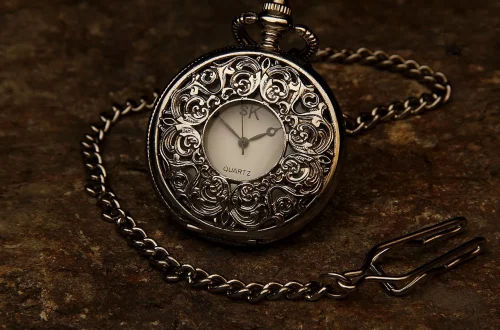
The Ultimate Guide to Choosing the Best Sippy Cup for Your Child
Choosing the right sippy cup for your child can be a daunting task for many parents. With a plethora of options available in the market, it can feel overwhelming to decipher which features are most beneficial for your little one. Sippy cups are not just simple drinking vessels; they are essential tools that can facilitate the transition from bottle feeding to independent drinking. As toddlers begin to explore their newfound abilities, a suitable sippy cup can significantly impact their learning experience.
Parents often find themselves navigating through various designs, materials, and functionalities, each claiming to be the best choice. The right cup can contribute to your child’s motor skills development, oral health, and even their hydration habits. Furthermore, the aesthetic appeal, ease of cleaning, and spill-proof features can also play a substantial role in your decision-making process. Understanding these aspects can help ensure that your child has a positive drinking experience while also meeting their developmental needs.
In this guide, we will explore the essential features to look for, common challenges that parents face, and tips for making the best choice for your child’s sippy cup journey.
Understanding Different Types of Sippy Cups
When it comes to sippy cups, there isn’t a one-size-fits-all solution. Each type of cup is designed with specific features that cater to different developmental stages and needs. The three main types of sippy cups are traditional sippy cups, straw cups, and transition cups.
Traditional sippy cups usually have rigid spouts that resemble a bottle. These are often made of plastic or stainless steel and are designed to be spill-proof. They can help toddlers learn how to sip from a cup while still providing the comfort of a familiar bottle shape. However, parents should be cautious, as prolonged use of these cups can potentially lead to dental issues due to the prolonged exposure to liquids.
Straw cups are another popular option, especially for older toddlers. These cups encourage a natural sipping motion and can help develop oral motor skills. They are typically easier for children to drink from independently, making them a favorite for parents who want to promote self-feeding. Look for models with removable straws, as this feature can make cleaning much easier.
Transition cups often combine elements of both traditional sippy cups and regular cups. These cups usually have a removable spout or lid that can be replaced with a regular cup attachment. This versatility allows parents to gradually introduce their child to drinking from a standard cup without the abrupt change that can sometimes lead to spills and frustration.
Each type has its pros and cons, and the best choice will depend on your child’s age, preferences, and developmental stage. It’s essential to consider how each type of cup aligns with your child’s needs and your parenting style.
Key Features to Look For
When selecting a sippy cup, it’s crucial to consider various features that can enhance both functionality and usability. Here are some significant characteristics to keep in mind during your search.
**Material**: Sippy cups come in a range of materials, including plastic, stainless steel, and silicone. While plastic is lightweight and often less expensive, it may contain harmful chemicals such as BPA. Stainless steel options are typically more durable and insulated, helping to keep drinks cold. Silicone cups are soft and flexible, making them easy for little hands to grip. Ensure that any materials used are free from harmful chemicals and are safe for children.
**Spill-proof Design**: A sippy cup’s ability to prevent spills is crucial, especially for parents who want to avoid messes. Look for cups with advanced spill-proof designs, which usually feature built-in valves or lids that prevent liquid from leaking out. These mechanisms can be a lifesaver for parents on the go.
**Ease of Cleaning**: Cleaning is another vital factor to consider. Some sippy cups come with many parts, making them more challenging to clean thoroughly. Opt for cups that are dishwasher safe or have simple designs with fewer components. This can save you time and ensure that the cups remain hygienic.
**Grip and Size**: The size and grip of the sippy cup are important for your child’s comfort. Choose cups that fit comfortably in your child’s small hands and are lightweight enough for them to hold independently. Some cups come with ergonomic designs or handles, making them easier for toddlers to grasp.
**Aesthetics**: Lastly, consider your child’s preferences. Many sippy cups come in vibrant colors and feature popular characters. Choosing a cup that your child is excited about can encourage them to use it more frequently.
By focusing on these essential features, you can make an informed decision that not only meets your child’s needs but also aligns with your lifestyle as a parent.
Common Challenges and Solutions
Despite the multitude of options available, parents often encounter challenges when it comes to selecting and using sippy cups. Some of the most common issues include resistance from the child, difficulty in cleaning, and concerns about dental health.
One of the most significant challenges is getting your child to transition from a bottle to a sippy cup. Some children may refuse to use a sippy cup altogether, preferring the comfort of a bottle. To address this, consider introducing the sippy cup during a fun activity, such as snack time or playtime. Use positive reinforcement by praising your child for trying the new cup, and offer encouragement without pressure.
Cleaning can also be a hassle, especially if the cup has multiple parts or a complex design. To mitigate this, consider using a cup that is dishwasher safe or one with minimal components. Alternatively, establish a quick cleaning routine after each use. Rinsing the cup immediately after use can prevent residue from building up, making it easier to clean later.
Lastly, parents often worry about the impact of sippy cups on dental health. Prolonged use of traditional sippy cups can lead to tooth decay if sugary drinks are frequently used. Encourage your child to drink water or milk during meals and limit juice consumption. Furthermore, practice good oral hygiene by brushing your child’s teeth after they drink from a sippy cup.
By being aware of these challenges and implementing practical solutions, parents can navigate the sippy cup journey more effectively.
Making the Right Choice for Your Child
Choosing the perfect sippy cup for your child involves careful consideration of various factors, including your child’s age, preferences, and developmental needs. Start by observing your child’s behavior and preferences when it comes to drinking. Pay attention to how they hold their current cups or bottles and what they seem to enjoy.
It’s also beneficial to involve your child in the selection process. Let them choose a cup that they find appealing or one that features their favorite characters. This involvement can make them more excited about using the cup and can help foster independence in their drinking habits.
Consider starting with a couple of different options to see which one your child prefers. You can rotate between a few types of cups, such as a traditional sippy cup and a straw cup, to determine what works best for your family. Remember that it’s normal for children to have preferences, and some trial and error may be necessary.
Ultimately, the best sippy cup is one that meets your child’s needs while making your life as a parent easier. With the right features, a little patience, and a touch of creativity, you can find a sippy cup that will help your child enjoy their drinks and transition smoothly from bottle to cup.
**Disclaimer**: This article is not intended as medical advice. For any health-related concerns, consult a healthcare professional.




